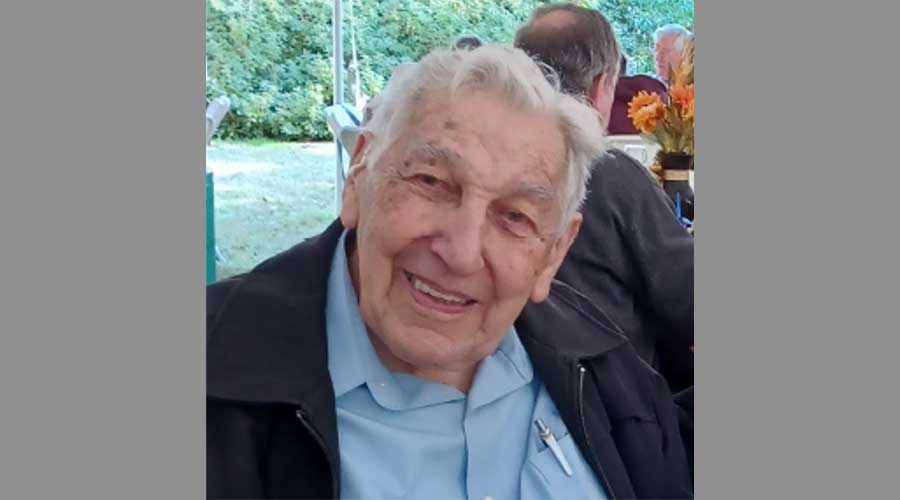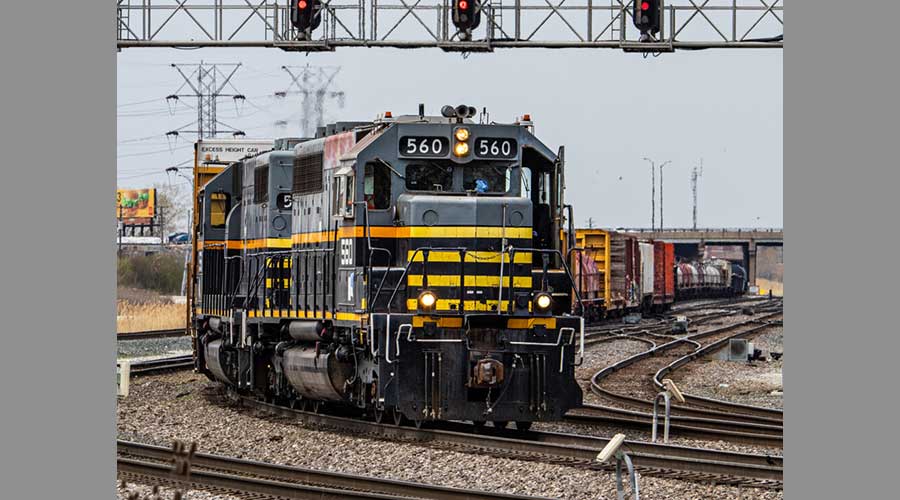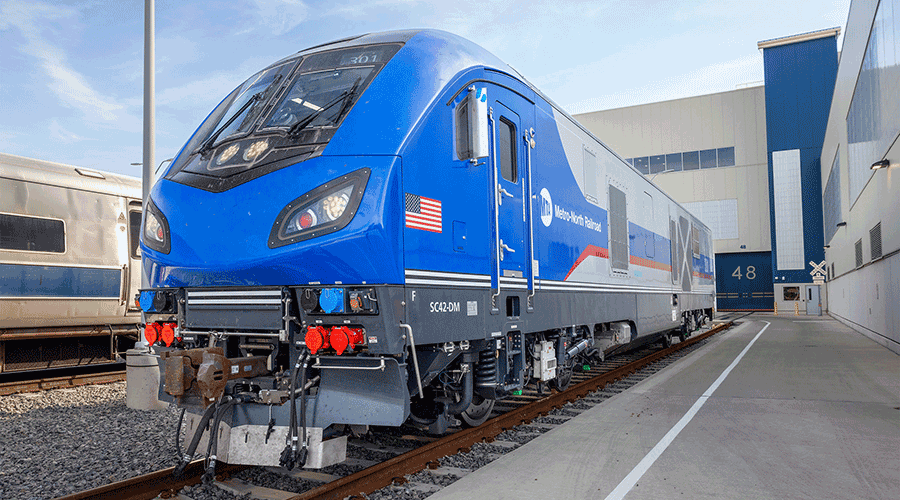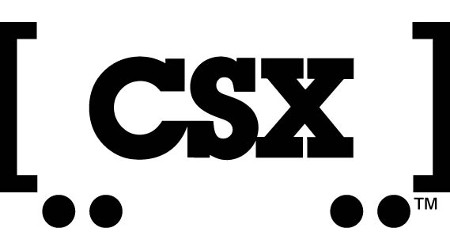Newsletter Sign Up
Stay updated on news, articles and information for the rail industry
Stay updated on news, articles and information for the rail industry
RAIL EMPLOYMENT & NOTICES
Rail News Home
Passenger Rail
Rail News: Passenger Rail
10/13/2000
Rail News: Passenger Rail
Transit issues worth watching on western state ballots
advertisement
As Election Day 2000 looms, it’s easy to get lost in the candidate rhetoric permeating the airwaves — along with excessive commentaries. But beneath the electoral propaganda are state transportation issues and ballot measures that could hold voters’ attention longer than presidential races — especially in Oregon and Washington.
Oregon has 26 November ballot measures that relate to or could affect transportation or transportation funding. The one with greatest potential impact is ballot measure 91 (BM-91), which would change the Oregon tax code to allow corporate payers to deduct all federal income tax in computing state taxable income. Currently, personal income payers may deduct up to $3,000; corporate payers may not deduct any federal income in computing state income taxes.
If passed, this ballot measure would put a "sizable dent" in the state budget, says Bernie Bottomly, director of legislative affairs at Tri-County Metropolitan Transportation District of Oregon (Tri-Met).
Oregon’s income taxes provide $19 million for elderly and disabled person transportation, with Tri-Met receiving about 40 percent of that. BM-91 would reduce available funds by about 10 percent to 15 percent, says Bottomly.
Another measure, BM-93, seeks to require putting any fee changes to a public vote. Currently, some taxes are approved by majority vote; this measure would require most to be approved by the same percentage of voters who approve BM-93. Although transit fares are listed as exempt, other business areas could be effected. Tri-Met does not charge fees to use park-and-ride lots. If the agency determined a need to change that policy for lot upkeep, for example, the state first would have to vote on the measure.
Oregon voters also will consider BM-2, which would allow any public person to appeal an administrative rule by gathering 10,000 signatures. Mainly, this would apply to state rules, but could create legislative gridlock by dramatically increasing the volume of appeals possible. And BM-7 would require reimbursement to property owners for government action restricting the use of private property. Although specific cases are not cited, this measure could cover placement of bus stops or transit stations.
Bottomly plans to watch these and the remaining ballot measures that could impact Oregon transportation — thankful that none of them seem likely to have the $60 million effect on Tri-Met that Washington’s Initiative 695 (I-695) had on Central Puget Sound Regional Transit Authority (Sound Transit).
I-695 changed Washington’s motor vehicle excise tax to a flat $30 fee, slashing the state budget by $750 million, including funds earmarked for Sounder commuter rail.
Sound Transit overcame that shortfall thanks to a Puget Sound Regional Council committee that allocated federal transportation funds to the commuter rail. On Oct. 18, Sounder will complete its first month of service, logging more than 22,000 passenger trips — already half of projected ridership.
"I’d consider [Sounder’s first month] a success," says Clarence Moriwaki, Sound Transit media relations specialist.
But the ghost of I-695 remains, and has taken on a new incarnation in the form of I-745, which stipulates that 90 percent of all transportation funding in the state be spent on construction of new roads, new lanes on existing roads, road capacity improvement or maintenance of roads.
Specified "transportation funding" includes state and local transportation funds, the highway fund, public transit and ferry operating accounts and reserves, public transit and ferry capital accounts and reserves, local government transportation accounts, public transportation authorities, transportation benefit districts and amounts in Washington’s high-occupant vehicle account.
In his statement favoring I-745, published on the Washington Secretary of State Elections and Voting Information Web site, Tim Eyman, a Washington resident who penned the initiative, wrote that the state spends 70 percent of its transportation taxes on roads, although cars and trucks are the mode of choice for nearly 95 percent of all trips taken. He believes changing the law would result in a more realistic approach to transportation spending: 90 percent of the funds for the 95 percent-preferred mode.
In its opposing statement, a group led by League of Women Voters of Washington Co-Chair Elizabeth Pierini stated that I-745’s passage would cut fund availability for other transportation choices, including transit. In addition, funds approved by communities for local public-transit projects would fall under state control for statewide use on roads.
The initiative also seeks to exempt from sales and use taxes materials and labor used in constructing publicly owned streets, roads and highways.
"If you think traffic congestion is bad, you haven’t seen the legislative tie-up this would cause if it passes," says Moriwaki.
— Kathi Kube
Oregon has 26 November ballot measures that relate to or could affect transportation or transportation funding. The one with greatest potential impact is ballot measure 91 (BM-91), which would change the Oregon tax code to allow corporate payers to deduct all federal income tax in computing state taxable income. Currently, personal income payers may deduct up to $3,000; corporate payers may not deduct any federal income in computing state income taxes.
If passed, this ballot measure would put a "sizable dent" in the state budget, says Bernie Bottomly, director of legislative affairs at Tri-County Metropolitan Transportation District of Oregon (Tri-Met).
Oregon’s income taxes provide $19 million for elderly and disabled person transportation, with Tri-Met receiving about 40 percent of that. BM-91 would reduce available funds by about 10 percent to 15 percent, says Bottomly.
Another measure, BM-93, seeks to require putting any fee changes to a public vote. Currently, some taxes are approved by majority vote; this measure would require most to be approved by the same percentage of voters who approve BM-93. Although transit fares are listed as exempt, other business areas could be effected. Tri-Met does not charge fees to use park-and-ride lots. If the agency determined a need to change that policy for lot upkeep, for example, the state first would have to vote on the measure.
Oregon voters also will consider BM-2, which would allow any public person to appeal an administrative rule by gathering 10,000 signatures. Mainly, this would apply to state rules, but could create legislative gridlock by dramatically increasing the volume of appeals possible. And BM-7 would require reimbursement to property owners for government action restricting the use of private property. Although specific cases are not cited, this measure could cover placement of bus stops or transit stations.
Bottomly plans to watch these and the remaining ballot measures that could impact Oregon transportation — thankful that none of them seem likely to have the $60 million effect on Tri-Met that Washington’s Initiative 695 (I-695) had on Central Puget Sound Regional Transit Authority (Sound Transit).
I-695 changed Washington’s motor vehicle excise tax to a flat $30 fee, slashing the state budget by $750 million, including funds earmarked for Sounder commuter rail.
Sound Transit overcame that shortfall thanks to a Puget Sound Regional Council committee that allocated federal transportation funds to the commuter rail. On Oct. 18, Sounder will complete its first month of service, logging more than 22,000 passenger trips — already half of projected ridership.
"I’d consider [Sounder’s first month] a success," says Clarence Moriwaki, Sound Transit media relations specialist.
But the ghost of I-695 remains, and has taken on a new incarnation in the form of I-745, which stipulates that 90 percent of all transportation funding in the state be spent on construction of new roads, new lanes on existing roads, road capacity improvement or maintenance of roads.
Specified "transportation funding" includes state and local transportation funds, the highway fund, public transit and ferry operating accounts and reserves, public transit and ferry capital accounts and reserves, local government transportation accounts, public transportation authorities, transportation benefit districts and amounts in Washington’s high-occupant vehicle account.
In his statement favoring I-745, published on the Washington Secretary of State Elections and Voting Information Web site, Tim Eyman, a Washington resident who penned the initiative, wrote that the state spends 70 percent of its transportation taxes on roads, although cars and trucks are the mode of choice for nearly 95 percent of all trips taken. He believes changing the law would result in a more realistic approach to transportation spending: 90 percent of the funds for the 95 percent-preferred mode.
In its opposing statement, a group led by League of Women Voters of Washington Co-Chair Elizabeth Pierini stated that I-745’s passage would cut fund availability for other transportation choices, including transit. In addition, funds approved by communities for local public-transit projects would fall under state control for statewide use on roads.
The initiative also seeks to exempt from sales and use taxes materials and labor used in constructing publicly owned streets, roads and highways.
"If you think traffic congestion is bad, you haven’t seen the legislative tie-up this would cause if it passes," says Moriwaki.
— Kathi Kube


 2025 MOW Spending Report: Passenger-rail programs
2025 MOW Spending Report: Passenger-rail programs
 Gardner steps down as Amtrak CEO
Gardner steps down as Amtrak CEO
 Guest comment: Oliver Wyman’s David Hunt
Guest comment: Oliver Wyman’s David Hunt
 Women of Influence in Rail eBook
Women of Influence in Rail eBook
 railPrime
railPrime







